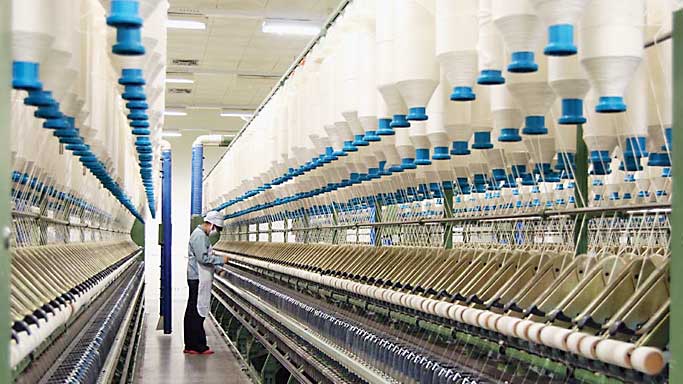The GST Council plans to take up the vexed issue of inverted duties on textiles at its meeting likely later this month.
In December, the council had dropped plans to hike the GST rates for most textile products in the man-made fibre value chain to 12 per cent from 5 per cent amid protests from the industry in Gujarat and other states.
The council hiked the rate to 12 per cent from 5 per cent for footwear sold below Rs 1,000, while the rate for footwear above Rs 1,000 was lowered to 12 per cent from 18 per cent.
Finance ministry officials said the inverted duty structure in textile was deferred at the last meeting, and would be taken up at the forthcoming meeting.
When faced with inverted duties — where the rate on the finished product is at a lower tax bracket compared with the raw materials — the government usually raised the rate on the finished product.
But the textile duty hike faced stiff opposition from the industry. The increase in the duty for footwear below Rs 1,000 also sparked protests leading to a rollback .
Pratik Jain, partner, PwC said “the GoM is likely to focus on correction of inverted duty structure at present. These issues do require detailed consultation and the GST Council may like to extend the timelines for the GoM to come up with their recommendations.”
M.S. Mani, partner, Deloitte India, said “while the rollback of the GST rate hike proposed on many textile products would benefit the sector, it would be necessary to find out a solution to the problems of inverted duty structure in the textile sector”.
Ritesh Kanodia, partner, Dhruva Advisors, said “the industry was asking for a reduction in rates on raw materials to resolve the inverted duty issue, rather a rate increase was made. However, it is still beneficial when compared with the rate increase which would have had a direct impact on the prices”.
Analysts said the council would have to perform a tough balancing act while addressing inverted duties, with the growing spike in global commodity prices adding to the inflationary pressure on the economy.
The tax rate on man-made fibre (MMF) at present is 18 per cent, MMF yarn 12 per cent, while fabrics are taxed at 5 per cent. The council in its meeting in September had decided to correct the inverted duty structure in footwear and textile sectors.
With effect from January 1, all footwear, irrespective of prices, will attract GST at 12 per cent. It was also decided that a 12 per cent uniform GST rate would apply on textile products, except cotton, including readymade garments.
Pratik Jain, partner, PwC said “the GoM is likely to focus on correction of inverted duty structure at present. It appears that not much deliberation has taken place on the merger of tax slabs (from four to 3) as yet. These issues do require detailed consultation and the GST Council may like to extend the timelines for the GoM to come up with their recommendations.”
M.S. Mani, partner, Deloitte India, said "while the rollback of the GST rate hike proposed on many textile products would benefit the sector, especially SMEs and MSMEs who operate in this employment intensive sector, it would be necessary to find out a solution in future to the problems of inverted duty structure in the textile sector".
Ritesh Kanodia, partner, Dhruva Advisors, said “the industry was asking for a reduction in rates on raw materials to resolve the inverted duty issue, rather a rate increase was made. The move puts back the industry in an inverted duty structure regime requiring them to claim refund of input taxes, however it is still beneficial when compared to the rate increase which would have had a direct impact on the prices”.
The GST collection in March touched an all-time high of over Rs 1.42 lakh crore because of various rate rationalisation measures undertaken by the council to correct the inverted duty structure, the finance ministry said.

